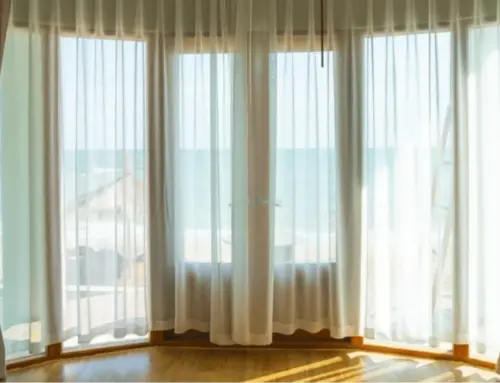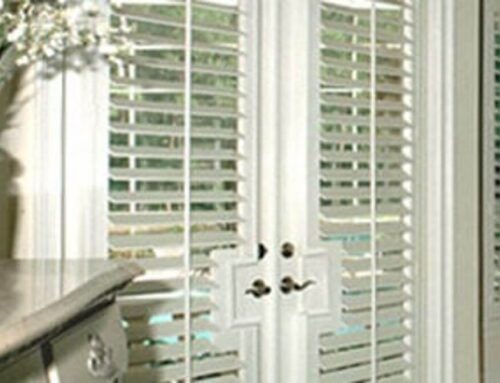Window treatments are doing more than just blocking light—they’re reshaping how we experience space. The right shades, blinds, or drapes can change a room’s mood, making it feel calm, open, or cozy. Natural light filtered through soft fabrics can make a space feel warm and inviting, while sleek, modern treatments create a sense of order and focus. Designers now use window coverings as emotional tools, blending function with the subtle psychology of comfort and control.
This shift goes beyond aesthetics. Thoughtful window treatments can improve productivity, support better sleep, and even boost mental well-being by creating harmony between light, color, and privacy. Whether in a home or office, they help shape how people feel and interact within a space, proving that interior design isn’t just about how a room looks, but how it makes you feel.
How do modern window treatments influence the way people perceive space?
Modern window treatments have a powerful impact on how people perceive and experience space. They go far beyond decoration—acting as tools that shape light, mood, and overall spatial awareness. Here’s how they influence perception:
- Control of natural light: Adjustable blinds, shades, and smart window systems let you fine-tune lighting levels, making rooms feel larger, softer, or more intimate depending on the setting.
- Enhanced sense of openness: The use of minimalist designs, such as roller shades or transparent curtains, helps to maintain visibility and natural light, which provides a sense of openness and airiness in smaller rooms.
- Mood and ambiance: The color, texture, and fabric of window treatments influence emotional response. Warm tones create coziness, while cool or neutral shades evoke calm and focus.
- Balance and proportion: Window treatments that are installed correctly provide a beautiful frame around the windows, imparting a feeling of order and symmetry that contributes to the room’s overall visual harmony.
- Smart integration: Window treatments that are automated or motorized give the impression of being contemporary and seamless, while encouraging convenience and a high-end look.
- Privacy and comfort: Layered treatments enable light management without compromising privacy, which contributes to an increased sense of safety and relaxation for individuals.
Modern window treatments subtly transform how we feel and function in our environments, turning ordinary spaces into personalized, emotionally balanced settings.
What role do window coverings play in shaping mood and atmosphere in a room?
Window coverings play a key role in shaping the mood and atmosphere of any room. Beyond their practical function, they influence how light, color, and texture interact directly affecting how people feel in a space. Here’s how they help set the tone:
- Light control: The amount and quality of light filtering through a window can dramatically shift the mood. Soft, diffused light from sheer curtains creates a sense of calm and relaxation, while blackout shades provide focus and restfulness.
- Color psychology: Warm-toned fabrics add coziness and energy, while cool or neutral shades evoke serenity and balance. The color of your window treatments can instantly change the emotional temperature of a room.
- Texture and material: Luxurious fabrics like velvet or linen bring warmth and sophistication, while sleek materials like metal or bamboo add a modern, clean feel.
- Privacy and security: People are able to feel more at ease, comfortable, and safe in their surroundings when they have the power to adjust the visibility from the outside.
- Design harmony: Visual flow can be created by coordinating window treatments with the colors of the furniture and the walls, which in turn improves the overall atmosphere of the area.
Window coverings act as emotional design tools—shaping light, comfort, and ambiance to make any space feel more intentional and inviting.
Why are interior designers moving away from traditional curtains?
Here are some of the key reasons interior designers are increasingly moving away from traditional curtain styles:
- Many heavy, ornate draperies (think valances, ruffles, lots of pleats) are now seen as too formal or overwhelming for modern interiors. Instead, designers are favoring cleaner, simpler silhouettes that feel more relaxed and intentional.
- Curtains that dominate the window or block light can make spaces feel smaller or darker. With a growing emphasis on openness, natural light, and minimalism, alternatives like sleek blinds, shades, or sheer panels are gaining popularity.
- The material and texture of window coverings are evolving. Designers are choosing fabrics that feel lighter, let in more daylight, and integrate more seamlessly with architecture. Heavy velvet or overly decorative fabrics are less common now.
- Functionality and adaptability are more important. Homeowners want treatments that are easy to maintain, adjust for light/privacy, and work with technology (motorized systems, smart home integration) rather than simply looking decorative.
It’s not that curtains are completely out they still have a place, but the style, material, and function of window coverings have shifted. Designers are favoring treatments that feel modern, light, integrated, and tailored to how people live today rather than relying on curtain styles that reflect older design habits.
How do light control and texture in window treatments affect psychological comfort?
Light control and texture in window treatments have a major influence on psychological comfort because they shape how people experience space and mood. The way light enters a room and the feel of the materials surrounding it can either soothe or overstimulate the senses. Here’s how these elements affect mental and emotional well-being:
- Light control and mood: Soft, diffused natural light creates calm and balance, while harsh or uneven lighting can cause stress and fatigue. Adjustable window treatments like blinds or layered shades give people control over brightness, helping them feel more comfortable and in command of their environment.
- Texture and sensory comfort: The tactile quality of fabrics whether smooth, rough, soft, or woven adds emotional warmth and depth. Soft textures like linen or cotton tend to relax the mind, while sleek materials like metal or wood evoke focus and modernity.
- Day-to-night adaptability: The capacity to adjust the degree of illumination throughout the day helps to match with the circadian cycles that occur naturally, which in turn supports improved rest, concentration, and emotional stability.
Together, light control and texture transform a room from purely functional to emotionally nurturing, creating spaces that feel safe, inviting, and mentally restorative.
Transform Your Space with Modern Window Treatment Design
Transform your space with modern window treatment design by The Blind Man. Our expert team specializes in creating window solutions that do more than just control light—they shape how you feel in your home or workplace.
From sleek blinds and elegant shades to smart, automated systems, we offer styles that enhance comfort, boost mood, and complement your design vision. Every detail is tailored to match your lifestyle and aesthetic.
Experience how the right window treatment can open up your space, improve ambiance, and redefine your surroundings. Visit The Blind Man today and discover the psychology of beautiful design.





